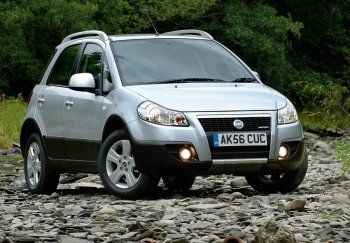|
Fiat is in deep
discussion about two new alliances with other carmakers and
could finalise a new deal in Europe by the end of June,
reports Italian daily Il Sole 24 Ore. The paper has
reported Fiat CEO Sergio Marchionne as saying, “The chapter
is not closed. (Alliances in Europe) could materialise
within the first half.”
Ever since
Marchionne took over as Fiat CEO and unpinned the
restrictive, all-embracing alliance that had previously been
forged with General Motors, he has embarked on a policy of
involving Fiat in new strategic alliances fitted to a
particular requirement; it is a direction that has proved
very successful in helping Fiat Auto to move forward.
His recent
alliances include a deal with India’s Tata Motors, in which
joint production, purchasing, and research and development
co-operation are all areas being addressed under the terms
of the agreement. Fiat are also slated to build the new 500
model in conjunction with Ford Europe, the latter using the
car’s Panda-based architecture to underpin their
next-generation Ka model. With Suzuki, Fiat Auto has
licensed production of their Multijet turbodiesel engine;
meanwhile the successful new Sedici is built at the Japanese
carmaker’s Hungarian factory and badged as a Fiat. Moreover,
to tackle the rapidly expanding Russian market, Fiat Auto
has teamed up with the country’s most ambitious carmaker,
Severstal Auto, to start production of a range of passenger
and commercial vehicles including the Palio, Albea, Doblò
and Ducato. Finally, a joint venture deal with Nanjing Auto
in China has been supplemented by a deal to source engines
from Chery Automotive. A long-running alliance with PSA
Peugeot-Citroën in the area of light commercial vehicles and
MPVs has also been broadened. There are no firm suggestions
as to which specific areas the two proposed new alliances
could address, although the media has been full of much
speculation.
|
 |
|
Fiat will build the new 500 model (above) in
conjunction with Ford Europe; the latter using the
car's Panda-based architecture to underpin their
next generation Ka model. |
|
|
 |
|
With Suzuki, Fiat Auto have licensed production of
their Multijet turbodiesel engine; which the Sedici
is built at the Japanese carmaker's Hungarian
factory and badged as a Fiat Sedici. |
|
|
However, with Marchionne (currently at the North American
International Auto Show in Detroit) this week vowing to
achieve his 2010 targets, a raft of new niche market models
are due to arrive and building any of them in tandem with
another carmaker would help to keep project costs down.
Marchionne has several times recently been very keen to
stress that alliances have brought significant savings in
R&D and the manufacturing processes.
Discussing the
new ‘Small’ platform with Automotive News Europe in
December, he said: “We have discussions going on, not just
in connection with this. To the extent that I own the
platform and want to allow people to come onto the platform
and do things with us, I am also willing to go onto
theirs. We have already seen the benefits of this sharing
with the mini architecture. It was born for the Panda and
planned in 200,000 units a year. With the new 500 and the
other model (the Ford Ka successor), we will reach 400,000
units a year.”
Fiat are also
proud of the ‘Compact’ platform which underpins the new
Bravo, a car which is due in the showrooms in a few weeks
time, and which will also support the Delta HPE, set to be
commercialised in 2008, and then the Alfa 149, a year
later. Based on the outgoing C-segment Stilo’s platform,
Fiat Auto has previously said this architecture could be
shared with other carmakers. The area of strategic
alliances is not just restricted to Fiat, as Alfa Romeo is
expected to share the floorpan of its forthcoming Grande
Punto-based coupé, codenamed ‘Junior’, with another firm.
|
|
|
|